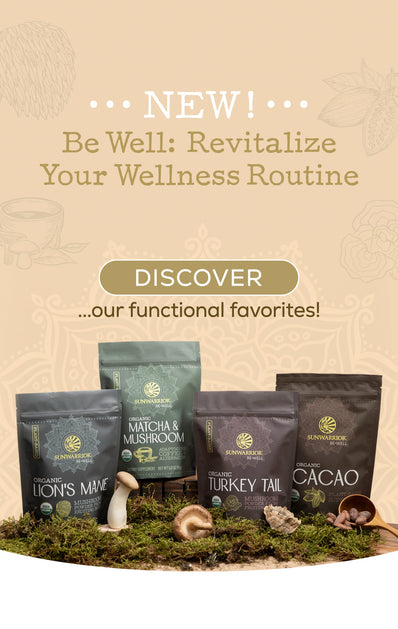Jumping into a vegan or vegetarian lifestyle isn’t always an easy decision or something most of us can manage overnight. There are many reasons to make the switch: to enhance health, honor religious beliefs, save money, support animal rights, or improve the environment. Whatever the reason, there are road blocks to overcome and rewards to reap ahead.
How to Start
Ease into it. Habits are hard to break, so chip away at them bit by bit. Eliminate meat from your meals just 1 day a week to begin with. Then move up to 2 or 3 days a week a few weeks later. Follow that trend from there to eventually remove all animal products.
 Get Help
Get HelpTell your friends and family what you want to accomplish. Having support makes anything easier. Yes, some of them may give you a hard time about the drastic change. Use that as fuel and prove to them that you can do it, because you truly can.
Find Those Alternatives
Transform, don’t replace, the foods you already know how to make and love first. Vegan or vegetarian recipes for your favorite meals are available in cookbooks at your bookstore and also free online. These recipes cover almost any food you can imagine, from burgers to pizza.
Tofu and tempeh, the usual meat substitutes, can be purchased in many grocery stores and health food stores almost anywhere. They can be marinated, baked, grilled, sautéed, crumbled into sauces, and they are surprisingly better tasting than you most likely think. They give you the protein you need and crave with thousands of recipe options and uses.
Miso paste is a soybean product that serves as a fantastic base in place of chicken or beef stocks. You’ll still be able to make that winter comfort food: soup with creamy potato, hearty roasted vegetable, delicious tomato basil, and much more still on the menu.
Think Salad
Salads are one of the easiest plant-based meals to make and there are a million ways to make each one unique and satisfying. Lettuce is not the only fresh green you can use. Arugula, spinach, cabbage, many types of lettuce, dandelion leaves, turnip greens, and even carrot tops make salads more interesting. Add lentils, seeds, beans, nuts, tofu, or tempeh for texture and protein. Don’t forget the fruits. Berries are refreshing in a greens-based salad. Fruit salads, without the greens, also make a perfect breakfast or a sweet treat when you need one.
Smoothies
Fruit smoothies are quick, easy, and simple while still leaving you feeling full and satisfied. They’re great for between meals or as a quick breakfast when in a rush. Bananas, berries, leafy greens, and some hempseed make a mouthwatering mix. You can also find plenty of plant-based proteins, along with recipes, online that will help you make a healthy beverage in a snap with a blender and a couple minutes.
Spices and herbs help make food taste better and are often full of valuable vitamins, minerals, and antioxidants. Use them when they’re called for in recipes and experiment with them to find what you like and don’t like. The spices you use make a big difference in how a finished meal tastes.
Explore
Try new things. Browse your local health food stores and test things out that sound interesting. Don’t give up on something that you didn’t like the first time. Often just changing brands gives you completely different flavors and textures. The rule of thumb is to try something twice from two different brands before deciding not to like it.
Don’t Get Upset
You’re new at this. Be patient with yourself as you learn, grow, and develop your skills and tastes. Forgive yourself when you make a mistake, botch a recipe, or cave to cravings. We’re all human and we all slip up.
Still Eat Out
You may think that you can no longer go out to eat. It’s true that fast food options are limited, but sit down restaurants are still plentiful. Chinese, Indian, Thai, and Middle Eastern restaurants offer delightful vegetarian and vegan dishes. Most Italian restaurants also have terrific choices. Add the foods you like while eating out to your recipes.
 Write Things Down
Write Things DownGather recipes in one place for easy access and reference. Starting a journal will help you voice and release frustrations, track how you feel, and show your progress.
Learn
You’re starting out fresh and it’s easy to get overwhelmed. Take each step slowly and learn from your mistakes and triumphs. Turn to like-minded people and learn from their stories and expertise. Don’t be afraid to ask for help at the health food stores or search online for answers. There are many people who have gone down this path before you who are willing and happy to help.
Supplement or Not
Vegan and vegetarian diets can give you everything the body needs, but there is some risk of not getting the protein, B12, iron, or omega-3 fatty acids you require. Many soy, rice, almond, and coconut milks are fortified with calcium, B12, and vitamin D. Iron is found in green vegetables, dry fruit, and fortified cereals. For omega-3 eat flaxseed, walnuts, hempseed, almonds, cashews, and avocados. If you’re worried you won’t get enough of a vitamin or nutrient, there are health food supplements available that are plant-based and ready for your new lifestyle.
Learn more about Charlie Pulsipher






